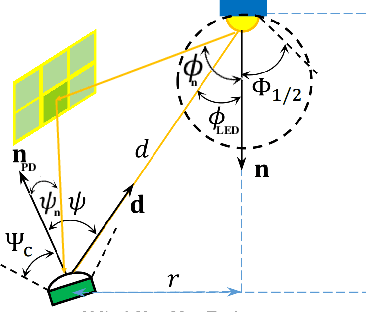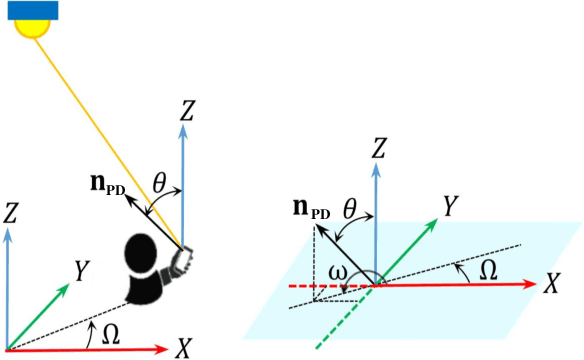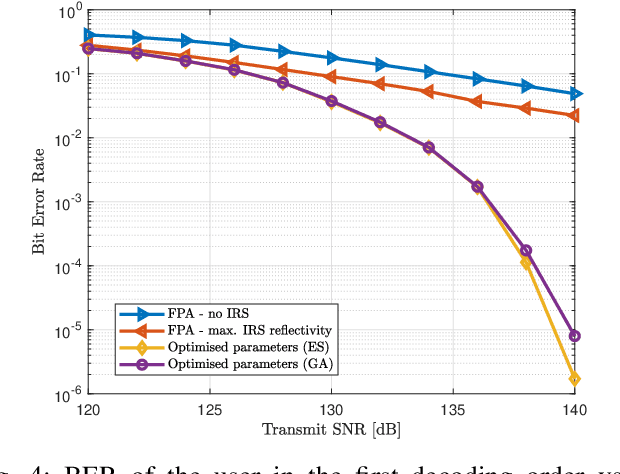Hanaa Abumarshoud
Optical Wireless Communications Using Intelligent Walls
Apr 08, 2023



Abstract:This chapter is devoted to discussing the integration of intelligent reflecting surfaces (IRSs), or intelligent walls, in optical wireless communication (OWC) systems. IRS technology is a revolutionary concept that enables communication systems to harness the surrounding environment to control the propagation of light signals. Based on this, specific key performance indicators could be achieved by altering the electromagnetic response of the IRSs. In the following, we discuss the background theory and applications of IRSs and present a case study for an IRS-assisted indoor light-fidelity (LiFi) system. We then highlight some of the challenges related to this emerging concept and elaborate on future research directions.
Intelligent Reflecting Surfaces for Enhanced NOMA-based Visible Light Communications
Nov 08, 2021



Abstract:The emerging intelligent reflecting surface (IRS) technology introduces the potential of controlled light propagation in visible light communication (VLC) systems. This concept opens the door for new applications in which the channel itself can be altered to achieve specific key performance indicators. In this paper, for the first time in the open literature, we investigate the role that IRSs can play in enhancing the link reliability in VLC systems employing non-orthogonal multiple access (NOMA). We propose a framework for the joint optimisation of the NOMA and IRS parameters and show that it provides significant enhancements in link reliability. The enhancement is even more pronounced when the VLC channel is subject to blockage and random device orientation.
Amplitude, Phase, and Quadrant (APQ) Modulation for Indoor Visible Light Communications
Apr 09, 2021



Abstract:The main challenge in visible light communications (VLC) is the low modulation bandwidth of light-emitting diodes (LEDs). This forms a barrier towards achieving high data rates. Moreover, the implementation of high order modulation schemes is restricted by the requirements of intensity modulation (IM) and direct detection (DD), which demand the use of real unipolar signals. In this paper, we propose a novel amplitude, phase and quadrant (APQ) modulation scheme that fits into the IM/DD restrictions in VLC systems. The proposed scheme decomposes the complex and bipolar symbols of high order modulations into three different symbols that carry the amplitude, phase and quadrant information of the intended symbol. The constructed symbols are assigned different power levels and are transmitted simultaneously, i.e. exploiting the entire bandwidth and time resources. The receiving terminal performs successive interference cancellation to extract and decode the three different symbols, and then uses them to decide the intended complex bipolar symbol. We evaluate the performance of the proposed APQ scheme in terms of symbol-error-rate and achievable system throughput for different setup scenarios. The obtained results are compared with generalized spatial shift keying (GSSK). The presented results show that APQ offers a higher reliability compared to GSSK across the simulation area, while providing lower hardware complexity.
 Add to Chrome
Add to Chrome Add to Firefox
Add to Firefox Add to Edge
Add to Edge